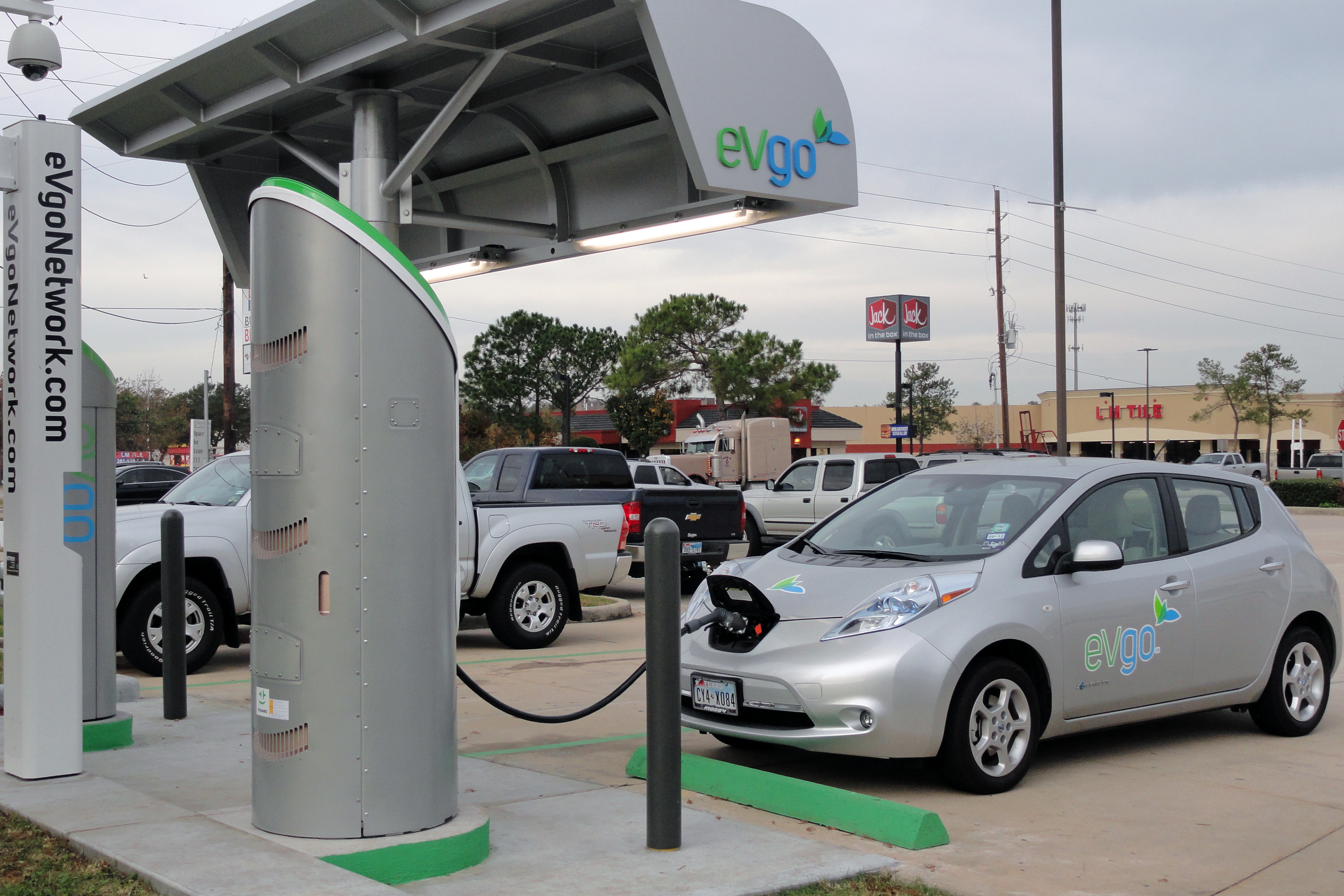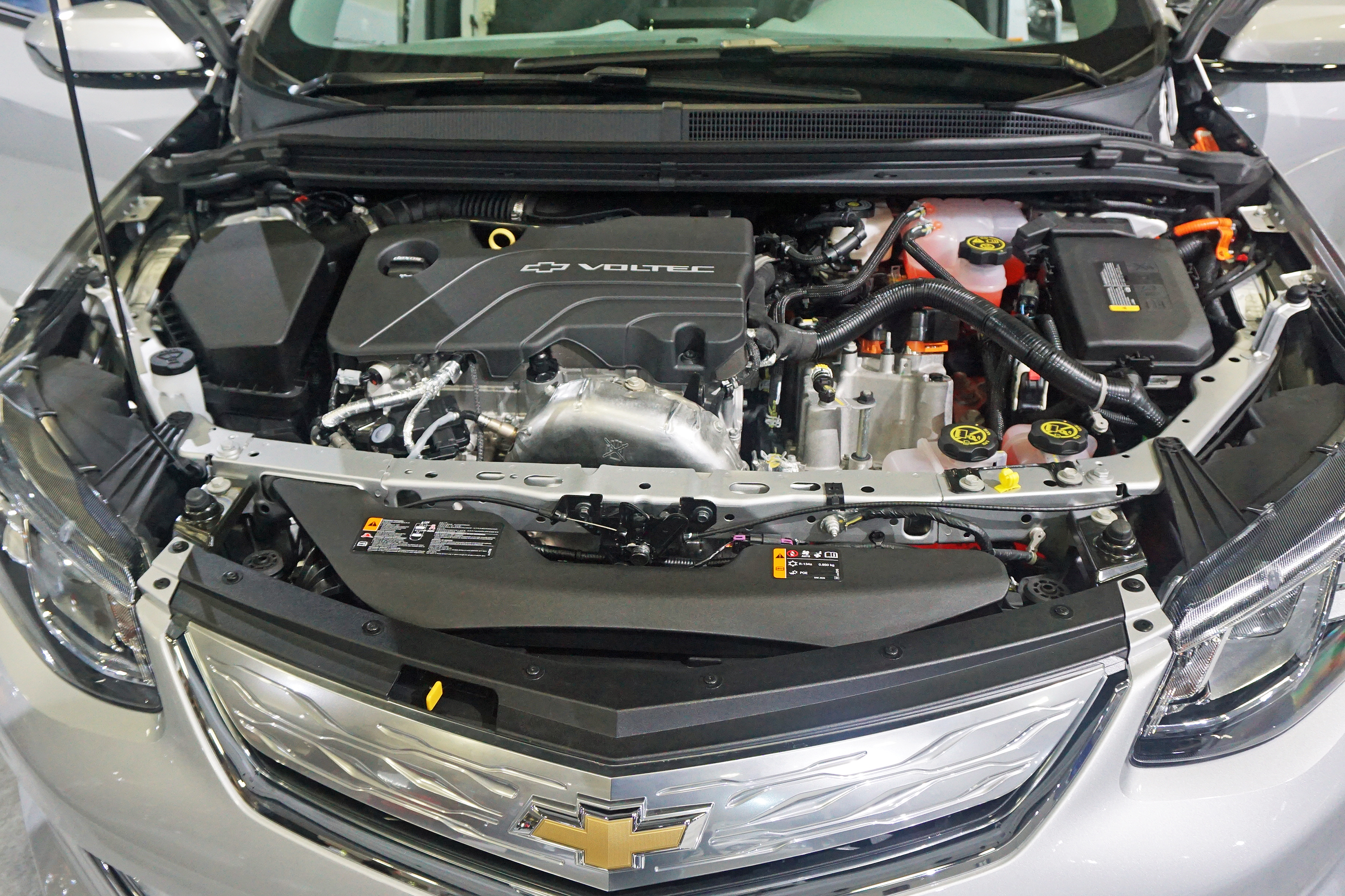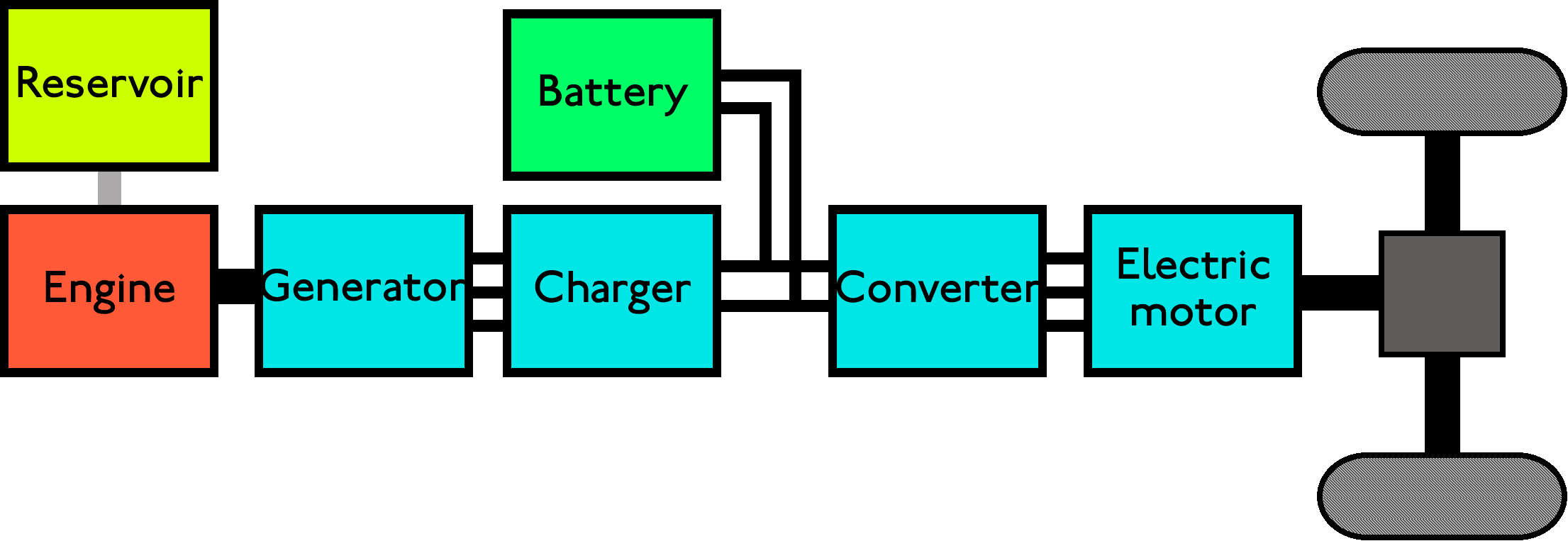|
EREV
A range extender is a fuel-based auxiliary power unit (APU) that extends the range of a battery electric vehicle by driving an electric generator that charges the vehicle's battery. This arrangement is known as a series hybrid drivetrain. The most commonly used range extenders are internal combustion engines, but fuel-cells or other engine types can be used. Range extender vehicles are also referred to as extended-range electric vehicles (EREV), range-extended electric vehicles (REEV), and range-extended battery-electric vehicle (BEVx) by the California Air Resources Board (CARB). Many range extender vehicles, including the Chevrolet Volt and the BMW i3, are able to charge their batteries from the grid as well as from the range extender, and therefore are a type of plug-in hybrid electric vehicle (PHEV). Motivation The key function of the range extender is to increase the vehicle's range. Range autonomy is one of the main barriers for the commercial success of electric vehic ... [...More Info...] [...Related Items...] OR: [Wikipedia] [Google] [Baidu] |
Range Anxiety
Range anxiety is the driver's fear that a vehicle has insufficient energy storage (fuel and/or battery capacity) to cover the road distance needed to reach its intended destination, and would thus strand the vehicle's occupants mid-way. The term, which is now primarily used in reference to battery electric vehicles (BEVs), is considered to be one of the major psychological barriers to large-scale public adoption of electric cars. The term "range anxiety" was first reported in the press on September 1, 1997, in the ''San Diego Business Journal'' by Richard Acello referring to worries of GM EV1 electric car drivers. On July 6, 2010, General Motors filed to trademark the term, stating it was for the purpose of "promoting public awareness of electric vehicle capabilities". The Norwegian equivalent ''rekkeviddeangst'' was assigned second place in a list of Norwegian "words of the year" for 2013 by the Norwegian Language Council. The main strategies to alleviate range anxiety among el ... [...More Info...] [...Related Items...] OR: [Wikipedia] [Google] [Baidu] |
BMW I3
The BMW i3 is a B-segment, high-roof hatchback manufactured and marketed by BMW with an electric powertrain using rear-wheel drive via a single-speed transmission and an underfloor Lithium-ion battery, lithium-ion battery pack and an optional Range extender, range-extending petrol engine. The i3 was BMW's first mass-produced zero-emissions vehicle, zero emissions vehicle and was launched as part of BMW's electric vehicle ''BMW i'' sub-brand. Styled by Richard Kim (car designer), Richard Kim, the i3 is offered in a single five-door configuration with a passenger module of high strength, ultra-lightweight CFRP (carbon fibre reinforced polymer) adhered to a lower aluminium module holding the chassis, battery, drive system and powertrain. The bodywork features two smaller clamshell suicide door, rear-hinged rear doors. The i3 debuted as a concept car, concept at the International Motor Show Germany#2011, 2011 International Motor Show Germany, and production began in September 2013 i ... [...More Info...] [...Related Items...] OR: [Wikipedia] [Google] [Baidu] |
Series Hybrid
Hybrid vehicle drivetrains transmit power to the driving wheels for hybrid vehicles. A hybrid vehicle has multiple forms of motive power. Hybrids come in many configurations. For example, a hybrid may receive its energy by burning gasoline, but switch between an electric motor and a combustion engine. Electrical vehicles have a long history combining internal combustion and electrical transmission as in a diesel–electric power-train although they have mostly been used for rail locomotives. A diesel–electric powertrain fails the definition of hybrid because the electric drive transmission directly replaces the mechanical transmission rather than being a supplementary source of motive power. One of the earliest forms of hybrid land vehicle was the 'trackless' trolleybus experiment in The United States (New Jersey) that ran from 1935 to 1948, which normally used traction current delivered by wire. The trolleybus was fitted with an internal combustion engine (ICE) to power the me ... [...More Info...] [...Related Items...] OR: [Wikipedia] [Google] [Baidu] |
Chevrolet Volt (second Generation)
The second generation Chevrolet Volt plug-in hybrid electric compact car produced by General Motors under the Chevrolet brand. It debuted at the 2015 North American International Auto Show to replace the original Volt, on sale since 2010. Retail deliveries as a 2016 model year began in October 2015 in the U.S. and Canada, and it was released in Mexico in December 2015. Availability of the 2016 model was limited to California and the other 10 states that follow California's zero emission vehicle regulations. It went on sale as a 2017 model year in the rest of the U.S. in February 2016. Volt production ended on February 15, 2019. Featuring a restyled exterior and interior, the Volt's revised battery system and drivetrain allow, under the United States Environmental Protection Agency (EPA) cycle, an all-electric range of , up from the first generation's . The EPA combined fuel economy in gasoline-only mode was rated at , up from for the previous generation. The official rating for ... [...More Info...] [...Related Items...] OR: [Wikipedia] [Google] [Baidu] |
Chevrolet Volt
The Chevrolet Volt is a plug-in hybrid manufactured by General Motors, also marketed in rebadged variants as the Holden Volt in Australia and New Zealand and the Buick Velite 5 in China, and with a different fascia as the Vauxhall Ampera in the United Kingdom and as the Opel Ampera in the remainder of Europe. Volt production ended in February 2019. Sales of the 2011 Volt began in the United States in mid-December 2010, followed by various European countries and other international markets in 2011. Global combined Volt/Ampera-family sales totaled about 177,000 units by the end of October 2018. The U.S. is the leading market, with 157,054 Volts delivered through the end of 2019, followed by Canada with 16,653 Volts sold through September 2018. Just over 10,000 Opel/Vauxhall Ampera cars had been sold in Europe . Until December 2018, the Volt/Ampera family of vehicles was the world's all-time bestselling plug-in hybrid vehicle. , the Chevrolet Volt is listed as the all-time top-se ... [...More Info...] [...Related Items...] OR: [Wikipedia] [Google] [Baidu] |
Pistonless Rotary Engine
A pistonless rotary engine is an internal combustion engine that does not use pistons in the way a reciprocating engine does. Designs vary widely but typically involve one or more rotors, sometimes called rotary pistons. Although many different designs have been constructed, only the Wankel engine has achieved widespread adoption. The term rotary combustion engine has been used as a name for these engines to distinguish them from early (generally up to the early 1920s) aircraft engines and motorcycle engines also known as ''rotary engines''. However, both continue to be called ''rotary engines'' and only the context determines which type is meant, whereas the "pistonless" prefix is less ambiguous. Pistonless rotary engines A pistonless rotary engine replaces the linear reciprocating motion of a piston with more complex compression/expansion motions with the objective of improving some aspect of the engine's operation, such as: higher efficiency thermodynamic cycles, lower mecha ... [...More Info...] [...Related Items...] OR: [Wikipedia] [Google] [Baidu] |
Free-piston Engine
A free-piston engine is a linear, 'crankless' internal combustion engine, in which the piston motion is not controlled by a crankshaft but determined by the interaction of forces from the combustion chamber gases, a rebound device (e.g., a piston in a closed cylinder) and a load device (e.g. a gas compressor or a linear alternator). The purpose of all such piston engines is to generate power. In the free-piston engine, this power is not delivered to a crankshaft but is instead extracted through either exhaust gas pressure driving a turbine, through driving a linear load such as an air compressor for pneumatic power, or by incorporating a linear alternator directly into the pistons to produce electrical power. The basic configuration of free-piston engines is commonly known as single piston, dual piston or opposed pistons, referring to the number of combustion cylinders. The free-piston engine is usually restricted to the two-stroke operating principle, since a power stroke is requi ... [...More Info...] [...Related Items...] OR: [Wikipedia] [Google] [Baidu] |
Gas Turbine
A gas turbine, also called a combustion turbine, is a type of continuous flow internal combustion engine. The main parts common to all gas turbine engines form the power-producing part (known as the gas generator or core) and are, in the direction of flow: * a rotating gas compressor * a combustor * a compressor-driving turbine. Additional components have to be added to the gas generator to suit its application. Common to all is an air inlet but with different configurations to suit the requirements of marine use, land use or flight at speeds varying from stationary to supersonic. A propelling nozzle is added to produce thrust for flight. An extra turbine is added to drive a propeller (turboprop) or ducted fan (turbofan) to reduce fuel consumption (by increasing propulsive efficiency) at subsonic flight speeds. An extra turbine is also required to drive a helicopter rotor or land-vehicle transmission (turboshaft), marine propeller or electrical generator (power turbine). Greater ... [...More Info...] [...Related Items...] OR: [Wikipedia] [Google] [Baidu] |
Fuel Cell
A fuel cell is an electrochemical cell that converts the chemical energy of a fuel (often hydrogen) and an oxidizing agent (often oxygen) into electricity through a pair of redox reactions. Fuel cells are different from most batteries in requiring a continuous source of fuel and oxygen (usually from air) to sustain the chemical reaction, whereas in a battery the chemical energy usually comes from substances that are already present in the battery. Fuel cells can produce electricity continuously for as long as fuel and oxygen are supplied. The first fuel cells were invented by Sir William Grove in 1838. The first commercial use of fuel cells came more than a century later following the invention of the hydrogen–oxygen fuel cell by Francis Thomas Bacon in 1932. The alkaline fuel cell, also known as the Bacon fuel cell after its inventor, has been used in NASA space programs since the mid-1960s to generate power for satellites and space capsules. Since then, fuel cells have b ... [...More Info...] [...Related Items...] OR: [Wikipedia] [Google] [Baidu] |
All-electric Range
All-electric range (AER) is the maximum driving range of an electric vehicle using only power from its on-board battery pack to traverse a given driving cycle. In the case of an all-electric vehicle, it means the maximum range per recharge. For a plug-in hybrid electric vehicle (PHEV), it means the maximum range in charge-depleting mode, as PHEVs can travel considerably further in charge-sustaining mode which utilizes both fuel combustion and the on-board battery pack. Calculating AER is made more complicated in PHEVs because of variations in drivetrain design. A vehicle like the Fisker Karma that uses a serial hybrid design has a clear AER. Similarly a vehicle like the Chevrolet Volt which disengages the internal combustion engine (ICE) from the drivetrain while in electric mode has a clear AER, however blend-mode PHEVs which use the ICE and electric motor in conjunction do not have a clear AER because they use both gasoline and electricity at the same time. ''Equivalent A ... [...More Info...] [...Related Items...] OR: [Wikipedia] [Google] [Baidu] |
Rotational Speed
Rotational frequency (also known as rotational speed or rate of rotation) of an object Rotation around a fixed axis, rotating around an axis is the frequency of rotation of the object. Its unit is revolution per minute (rpm), cycle per second (cps), etc. The symbol for rotational frequency is \nu (the Greek alphabet, Greek lowercase letter Nu (letter), nu). Speed#Tangential speed, Tangential speed ''v'', rotational frequency \nu, and radial distance ''r'', are related by the following equation: :v = 2\pi r\nu :v = r\omega An algebraic rearrangement of this equation allows us to solve for rotational frequency: :\nu = v/2\pi r :\omega = v/r Thus, the tangential speed will be directly proportional to ''r'' when all parts of a system simultaneously have the same ''ω'', as for a wheel, disk, or rigid wand. The direct proportionality of ''v'' to ''r'' is not valid for the planets, because the planets have different rotational frequencies. Rotational frequency can measure, for e ... [...More Info...] [...Related Items...] OR: [Wikipedia] [Google] [Baidu] |






